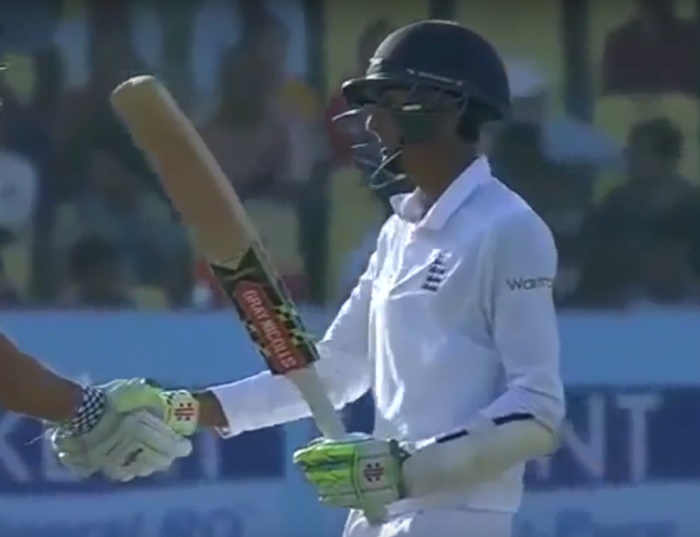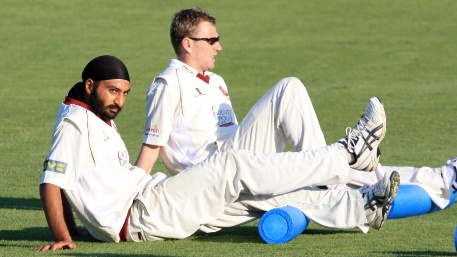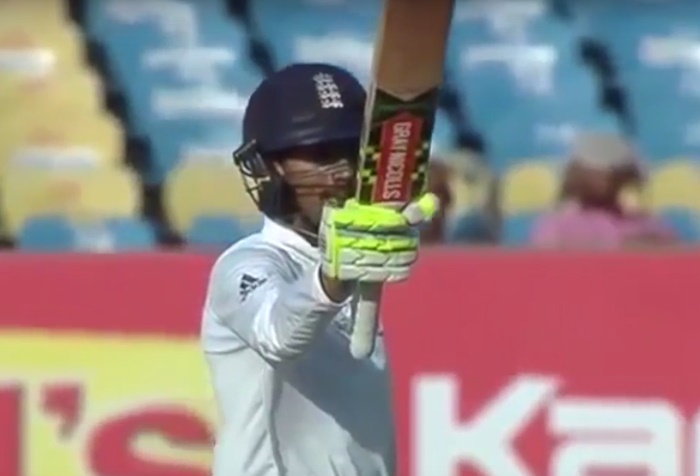In another universe, these five cricketers are the backbone of the England Test team.
A handful of players make it in Test cricket. Others get picked and aren’t good enough. Then there are the weird ones; the ones who get a few games, look the business and then for some weird reason or another disappear again when you were absolutely convinced that they’d become fixtures in the side.
Here are five players who seemed for all the world like they were going to become England mainstays in the 2010s… but then didn’t.
Gary Ballance

23 Tests, four hundreds, average 37.45
Gary Ballance is 30 years old. He has made 40 first-class hundreds and averages 47.40 and he can’t get into this England side.
Mental.
Ballance was, for a time, our favourite England batsman. He was solid and reliable and we greatly admired his stony-faced, doughy tenacity.
Then suddenly he wasn’t solid and reliable.
We’ve previously made the bizarre case that Ballance was poorly treated by England through their repeated selection of him and we largely stand by that.
Steven Finn

36 Tests, 125 wickets at 30.40
A perfectly respectable Test record, but let’s be honest, we all expected more. Much more. An unfair amount more really.
Finn was the man who was obviously – obviously – going to take the baton (there’s an opening-the-bowling baton?) from James Anderson and Stuart Broad, yet at the time of writing it looks like his Test career may have ended long before theirs.
Run-up tweaks, ebbing confidence, overthinking and injuries have all taken their toll. When England toured New Zealand last year, he travelled as a commentator, which is so depressing we can’t even properly think about it.
Haseeb Hameed

Three Tests, average 43.80
An 82 against India on his Test debut and an unbeaten 59 with a finger that was broken into “two pieces” (according to Trevor Bayliss) in his most recent Test innings.
All was rosy, at which point he started batting badly enough to be relegated to Lancashire’s second XI. After a year or so of that, they declined to give him a new contract.
Hameed is only 22. He’s now moved to Nottinghamshire. He’s going make it back, isn’t he?
Isn’t he…?
Monty Panesar

50 Tests, 167 wickets at 34.71
Look at that Test record and imagine it attached to a 31-year-old spin bowler, because that’s when Monty Panesar’s England career ended. These days he’s reduced to impossibly excruciating appearances on TV quiz shows.
Rangana Herath took 397 wickets after his 31st birthday. Graeme Swann took 170. Jimmy Anderson, a pace bowler, has so far taken 264. Even Ryan Harris, whose body was basically just dry, fragile bones bound together with old sellotape that had long since lost its stick, took 104 Test wickets after the age of 31.
Monty Panesar, as rhythmic and grooved a finger spinner as you will ever find, took zero.
It all rather drifted away from him, like a nice arm ball. There was a bit of something in the Monty Panesar has played one Test X number of times argument, but it was only a flaw, not uselessness. The real problem was beyond cricket where life just got the better of him for a while there.
James Taylor

Seven Tests, average 26
Let’s end with the saddest one, shall we? (Don’t blame us for the sequencing – blame the alphabet.)
Everyone remembers the 2012 version of James Taylor because Kevin Pietersen slagged him off and that is a very memorable thing. People also remember the 2016 retirement version of James Taylor because he had an unexpected heart thing and it was very shocking. No-one remembers the period from 2014 onwards when it honestly felt like he was mastering batting and maybe even believed that himself.
When Taylor was recalled to England’s one-day side that year, he had worked his way to the third-highest List-A average of all-time. The world’s busiest batsman was then a shot away from making a hundred against Australia in the 2015 World Cup before reaching three figures against them later that winter. This isn’t a period of one-day cricket anyone in England is keen to remember. The following summer, he made 291 against Sussex.
Taylor played five more Tests. He took a few blinding catches and made a couple of seventies, but this writer at least felt there was a lot more to come. Unfortunately, there wasn’t. He was 26.
Thanks to everybody who’s currently funding King Cricket on Patreon. Your pledges help us do features like this. If you’re not currently a King Cricket patron and you’d like to see us to do more with the site, you can flip us a shiny coin or buy us a pint each month here. Don’t feel you have to, but huge thanks if you do.



It’s still too soon to talk about Monty and James Taylor. So sad.
I know there are bigger world problems etc but it’s still sad.
This article made me sigh
Feck. This is kinda hard reading.
I think you can add Jos Buttler to the list despite the recent Tests and one-day success. He has been playing for England in one way or another since 2012 and is a world cup winner and everything, but I was so sure he was going to succeed as a Test player and he just never quite did, and given how flipping good he is he is perhaps the biggest under-achiever I have seen for England.
A few more suggestions to the What Might Have Been XI
– Ravi Bopara (current age 34)
– Nick Compton (36)
– Ben Duckett (25)
– Graeme Onions (34)
– Ajmal Shahzad (34)
Toby Roland-Jones is the one that sticks out to me. Four tests in one summer, averages under 20, and then disappears. Also, it’s probably too early to call him “lost,” but Ben Foakes is in danger of approaching that status.
That’s a very good suggestion. There’s a bit of English seamer, English conditions about him but that’s a lazy assumption that remains unexplored.
It’s injury wot did for Toby. Fully fit now, we’re told and hopefully will remain fully fit this coming season and beyond. Great lad – just signed a new three year deal with Middlesex:
https://www.middlesexccc.com/news/2020/01/toby-roland-jones-commits-long-term-future-to-middlesex
Steven Finn also has been beset by injuries and their knock on effects. Again, at Middlesex we’re full of hope for him 2020 and beyond.
There’s another list (*). Its subtitle is “In another universe, these five backbones of the England Test team are on the List of Lost Cricketers of the 2010s”. It is all those players whose early career gave very little indication of what they would become.
Top of the list is James Anderson, of course. An Aussie mate of mine once said of him that he needed the world’s greatest selector, to pick him specifically on the one-in-five matches when he was any good.
He is closely followed by Graeme Swann. There was no suggestion from his county career that he would be the final piece in England’s jigsaw.
Ben Stokes. In 2015 he was a shoo-in for the post of yet-another-new-Botham-that-has-failed-to-deliver. By this point he’d played 16 tests, had a batting average of 30 and a bowling average of 40. He was one disappointing year away from permanent if-only status.
Stuart Broad. Remember when we wondered how many chances he was going to get? It was a thing, asking why Broad was getting more chances to prove himself than most. For a long time, he was the archetypal spell bowler – four for twelve in seven overs, followed by none for two hundred in the rest of the match.
Jonathan Trott. His high County Championship average prior to his selection marked him out as a definite new Ramprakash, and yet two years later, and after an up-and-down start, he averaged 65 in tests. Where the hell did he come from (**)? He had county trundler written all over him.
I think what I’m saying is that few players come into test cricket with a high reputation that they go on to maintain. KP is one – expected to be a world beater, turned into a world beater (the best ever England batsman, according to David Lloyd). Cook is another who fulfilled his potential from the start.
(*) There are lots of lists. I mean, there’s a list of people who like Slade, a list of members of Slade, a list of single releases by Slade, and there are probably others lists as well.
(**) South Africa, obviously, where all our best batsmen come from.
Good points, Bert. Root was another one who came in with a high reputation and a ‘Next Big Thing’ sign around his neck…. he seems to have maintained it so far but he could still end up remembered more for his low conversion rate than for his high points.
On a more optimistic note, just wanted to share some incredible stories about India’s match winners in the u19 world cup.
Atharva Ankolekar, who made a match winning 50 in the QF against Aus, was brought up in hardship after having lost his father and sole breadwinner early in life. He was provided for by the largesse of Mumbai’s clubs, and raised by their coaches.
Yashaswi Jaiswal – who currently averages over 100 in the WC – with no place to stay when he first arrived in Mumbai as a 7 year old, was raised in a tent on Azad Maidan, one of Mumbai’s cricket Meccas, and sold Indian street side snacks in the evenings. The tent was available to him as long as he continued to play well. He was bought by Rajasthan Royals for GBP 270,000 for this season. He turned 18 in Dec.
More power to them!
Mumbai Indians missed a trick there. Sounds perfect for one of those biography segments bits in Cricket Fever.
Heartwarming stories – thanks Ameya.
Meanwhile Denly went bigly but not to the same extent as The Bigly Swinging De Kock went for the oppo. Have England reverted to norm in ODIs or will they turn this series around, as they did the test series? There is only one way to find out…
Yes indeed. Only one way: we need to find one of those seer animals like that mystic octopus that used to do the football world cup.
Radio 1 used a psychic robot hoover called Alan to predict the women’s football world cup (and I think England v Australia in the cricket world cup).
The robot hoovers are quite pricey but easier to obtain and less work to look after than an octopus.
Paul Collingwood has a robot lawnmower called Gary – he won’t be using it for the lawn at this time of year so perhaps Gary could have a go at divination.
OK, KC & Essie, perhaps there are more ways than one to find out.
I had no idea that the old “wait and see” method was out of favour these days.
I should have known.